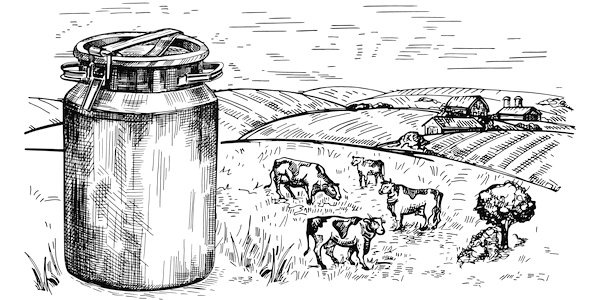This week we are repeating some Notes from the Sticks columns. This was first published on July 3, 2022.
I HAVE become rather fascinated by the tendrils which a number of floppy plants use to hoist themselves up on stouter vegetation. Examples include peas, passion flowers and cucumbers.
I found a patch of tufted vetch (Viccia cracca), which has tendrils, and on Wednesday I took a few pictures.


I didn’t do very well at getting a close-up of the tendrils so I went back on Thursday morning to have another go. This is what I found:

The mad verge-slashers had been at it. Why do they do this?
As it happened I knew of a related plant nearby which uses the same technique, the meadow vetchling (Lathyrus pratensis) so I visited that site on Friday. Here is a picture complete with insect which I cannot identify (it may be a wasp and there are 9,000 species in Britain, as I wrote a couple of years ago).

And at last, here is a tendril wound round a twig, very nearly in focus:

Tendrils can be specialised leaves, stems or flowers, depending on the species. In all cases the function is to enable a weak-stemmed plant to climb nearer to the light. The tendril waves round in a circular motion known as circumnutation until it comes into contact with a suitable support, and winds round it. In one of those marvels of nature, it can tell if the possible support is one of its own shoots or one of the same species, and avoids twining round it.
Here is a time-lapse video with the inevitable accompaniment. I don’t know what this plant is.
After getting a strong hold on the support, the tendrils of many species subsequently coil. Charles Darwin noticed that the coil changes direction partway along, like an annoying handset telephone cord, but could not explain it. The phenomenon was later named ‘tendril perversion’, and you can see it in this video.
This video attempts to explain it – to be honest I am still a bit baffled, but it is fascinating to watch.
***
Sheep of the Week

THESE are Île-de-France sheep. Contrary to the impression given by this photo, they have only the standard four legs apiece. The breed was developed at a French veterinary college in the 1830s through crosses of British Dishley Leicester (a parent of the Wensleydale Longwool which I wrote about here) and a French breed called Rambouillet Merino, and was originally known as the Dishley Merino. It was later called the Île-de-France after the region around Paris where it was established. It was first exported to the UK in the 1970s, and today, though there are not large numbers here, it is one of the top meat breeds worldwide.
It is large with white fleece, and is polled (does not have horns). An unusual characteristic is that ewes can produce lambs more often than once a year and many farmers get three lambings every two years.
I believe there is an Île-de-France Sheep Society in this country but they don’t seem to have an online presence. However you can read more about the breed at the South African society website.
I couldn’t resist this picture.

Being fluent in Hungarian, I can tell you that this video was made by the Hungarian Sheep and Goat Breeding Association.
***
LAST week I came across a small group paddling around in the Ribble with nets. I asked one of them, a girl in her early twenties at a guess, what they were up to. She told me they were from the Environment Agency and were sampling for eels, trout and salmon at a regular testing point. They had found only one eel, well down on earlier years. Oh yes, I replied, they are greatly endangered. (I wrote about them here a couple of years ago.) ‘It’s climate change,’ she explained. After a second to decide whether it was worth it, I said that over my long lifetime the climate had hardly changed at all, and certainly nothing like as much as the changes in climate in the millions of years that eels have been on earth. She looked surprised, as if she thought that Britain was under permafrost till 20 years ago. I went on: ‘And people are catching too many of them (my article reported a man from Surrey who got away with a slap on the wrist for smuggling millions of live juvenile eels to Hong Kong, where they were worth an estimated £53million, to be eaten as a delicacy or grown on) plus they have chosen just about the most complicated way to live, going to and forth from the Sargasso Sea . . .’ By this stage I might have been speaking in a foreign language, so little did it seem to mean to the listener. I can only assume that school pupils are being taught that everything can be blamed on climate change, the Empire or Brexit, and there is no need to inquire any further.
***
Wheels of the week
THIS is a Ford Prefect 100E dating from 1955, 1172cc.



The Prefect was first made at Dagenham in 1938 as a high spec version of the Ford Popular and the later Ford Anglia. Production was suspended between 1941 and 1945.
This design was introduced in 1953. A heater was an optional extra, and when the engine was working hard, the windscreen wipers (if in use) slowed or stopped. This particular model has top-of-the-line leather seats.
Motor magazine tested a 100E in 1957 and recorded a top speed of 71 mph, acceleration from 0-60 mph in 32.2 seconds and a ‘touring’ fuel consumption of 33.1 miles per gallon. At that time it cost £658 (£11,129 now) including taxes of £220 (£3,721).
A total of 100,554 were made before production ceased in 1959, to be replaced by the 107E.











